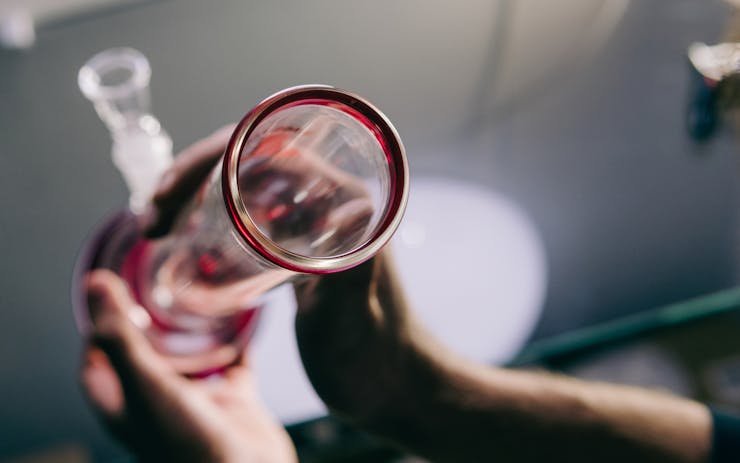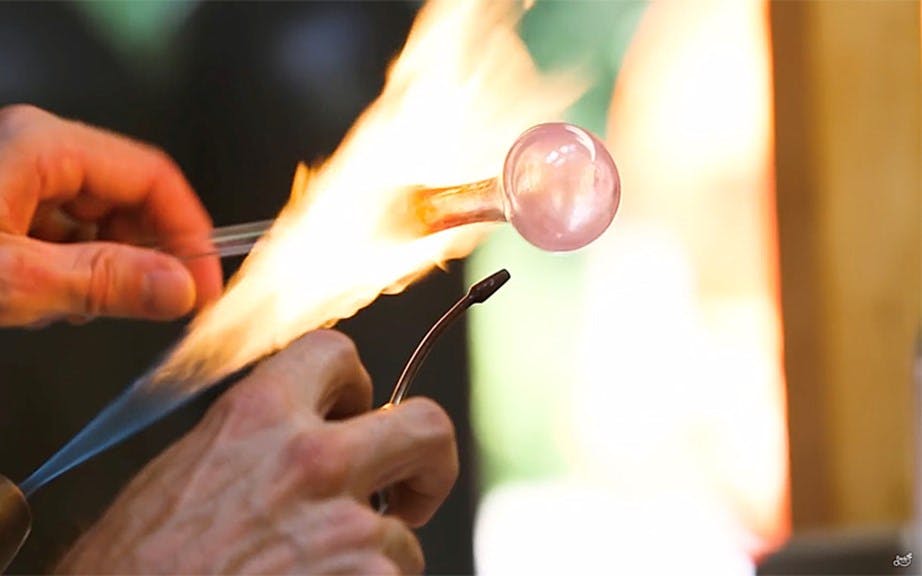It’s an unimaginable situation for any glass collector. Somehow, a prized piece has been damaged, cracked, or even shattered. When the damage is done, most people ask themselves two questions: “How did this happen?” and “What do I do next?”
Often, the answer to the latter relies on the answer to the former.
When something “irreplaceable” gets broken, the first step is to establish if the break is something an artist can fix. Adam Kandel, one of the glass industry’s first legitimate appraisers, says that if a piece can be fixed, the cause of the break is often the deciding factor in (and how) it is repaired.Need To Load Your Bong?And what if you were the one to break an irreplaceable bong? Kendal, who consistently appraises glass art in the six-figure range, offers a few points to remedy the situation.
Oops, I Broke It…Now What?
“If someone breaks a rare or a one-of-kind piece, what follows is mostly dependent on two things: the break and the treatment of the piece that led up to the break,” said Kandel.
On one end, he explained how breaks can sometimes be the fault of the artist, “If it wasn’t sealed correctly or the colors didn’t mesh well, it can cause internal breaks … They [artists] do their best to try to fix situations like that.”
However, if the break isn’t a reflection of a pre-existing flaw in the piece, there are other things to consider. “If it’s the buyer’s fault and it’s likely an effect of how the buyer treated the piece, it can be a totally different situation.”
When a piece is completely shattered, a buyer’s best bet is to contact the artist directly, keeping in mind that the fault of break often contributes to the artist’s willingness to help. An unfixable piece is hard to recover, but you can start the reparation process by determining its market value. Usually a piece’s most valuable traits are easy to spot:
- Type of style: the artist isn’t blowing this type of piece or no longer blowing glass at all.
- Limited editions: artists often retire certain styles and release limited edition sets at a higher value.
- Materials used: certain types of borosilicate can be difficult or even impossible to replace.
Why Originality and Sentimentality Reign
When making appraisals, Kandel starts by considering three basic factors: the artist, the amount of work done, and the piece itself, “Then I move on to the buyer condition of the piece and how it has been kept.”
Shop highly rated dispensaries near you
Showing you dispensaries nearSometimes a piece gains value when multiple artists collaborate, making it harder to price (much less replace). When collaborative pieces are blown at popular events, such as Degenerate Flame Off, it contributes a sense of novelty to an already invaluable piece—even sentimentality. Yet according to Kandel, nearly any piece has a price, even if a buyer might not agree with it.
“I think you can put a number on any piece,” said Kandel, “but sentimentality can be worth more than any monetary value.”
Many collectors say that using or looking at a certain piece evokes a specific feeling, which can be incredibly difficult to recreate. Often, this is one of largest hurdles in the process of agreeing on an appraisal for a piece.
“Some people have sentimental value in the pieces, which might make them feel it’s worth more,” Kandel said. “If I say the piece is worth ‘this much’ and they don’t agree, it might be because of sentimentality.”
Pricing From an Artist’s Perspective
According to Chris Carlson, a renowned glass blower with seventeen years in the industry, pricing is always difficult—even before a break.
“Pricing is really subjective,” said Carlson. “It is one of the hardest parts of all of this, trying to figure out what the prices are. And it’s more than just that, there are so many other factors to consider: what people have paid before, what it compares against, and so on. It’s a mixture of all of those things.”
And even if an artist is willing to work with a buyer to recreate a piece, Kandel notes each work of art is technically one-of-a-kind, “nothing can ever be done exactly the same,” said Kandel. “A second piece could mimic another piece, but with glass everything is one-of-one.”
If an artist won’t or can’t fix the piece, collectors are left wondering what’s next, but Kandel says there is a certain amount of responsibility a collector takes when letting someone else use their valuable piece.
“Most of the time, I think it’s handled privately between friends,” said Kandel. “If you’re going to pull out a certain piece that is worth so much money, I would hope you’re not just letting strangers hit it—especially if you don’t think they can cover it.”
“Art is a very temporary thing, but the art that matters is the art that stays relevant even after it's gone.”
According to Joe Peters, a glass artist who has collaborated on pieces valued at $300,000, glass collectors are all too familiar with the possibility of disaster.
“When you collect glass, you need to be open to the possibility that you might lose it one day,” said Peters. “All you can do is find another artist that you like, or another piece that you like, and continue on.”
Peters adds, however, that while a piece may no longer exist, the feeling it evokes can live on forever, “art is temporary; most of it doesn’t last the test of time. You can do everything right, leave your piece at home and still have your house burn down. Nothing is guaranteed. Art is a very temporary thing, but the art that matters is the art that stays relevant even after it’s gone.”






